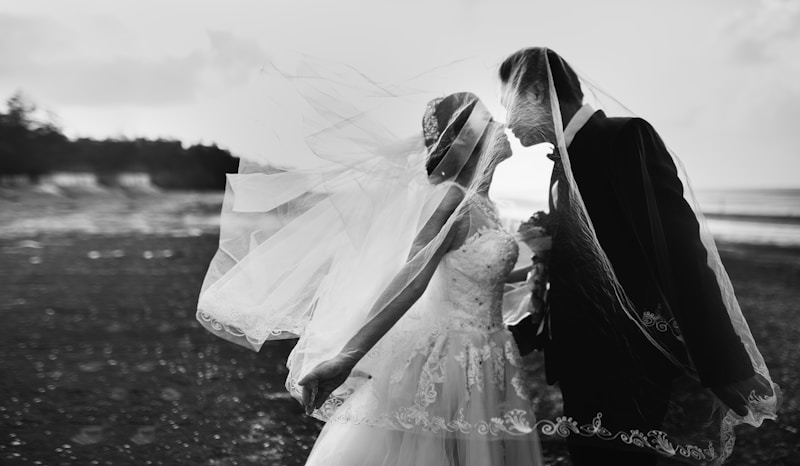Cultural Customs for Wedding Attire Shopping: A Global Perspective
Understanding Cultural Customs in Wedding Attire Shopping
When it comes to planning a wedding, choosing the right attire is one of the most significant decisions a couple will make. Wedding attire not only reflects personal style but also embraces cultural heritage. In this article, we delve into the cultural customs surrounding wedding attire shopping around the world, highlighting unique practices, traditional attire, and essential considerations. Whether you're looking for your dream dress or tuxedo, understanding these customs can provide insight and enrich your experience.
The Importance of Cultural Significance
Every culture has its own unique traditions, and wedding attire plays a crucial role in many of these ceremonies. The styles, colors, and fabrics of wedding outfits are often deeply rooted in history and symbolism. Understanding the significance of these elements can greatly enhance your attire shopping experience. Here are a few key reasons why cultural customs matter:
- They provide a sense of belonging and identity.
- They honor family traditions and ancestry.
- They can influence the overall theme and tone of the wedding.
Global Wedding Attire Shopping Customs
Let’s explore some of the fascinating cultural customs associated with wedding attire shopping from different regions around the world.
1. Western Weddings: The White Dress Tradition
In many Western cultures, particularly in America and Europe, the tradition of wearing a white wedding dress dates back to the 19th century. While modern brides may choose a variety of colors and styles, white remains a popular choice symbolizing purity and innocence. Shopping for a wedding dress often involves visiting bridal boutiques and trying on numerous styles.

| Key Elements | Shopping Customs |
| Bridal Showrooms | Appointments are often required to create a personalized experience. |
| Size Considerations | Many brides request special fittings months in advance. |
| Family Involvement | Brides often bring family members to assist in selecting the dress. |
2. Indian Weddings: Colorful Traditions
In Indian culture, wedding attire shopping is a vibrant affair. Brides typically wear luxurious sarees or lehengas in bright colors, embellished with intricate embroidery and jewels. Each color holds significance; for instance, red symbolizes prosperity and fertility. The shopping experience often involves visiting multiple markets and engaging with local artisans to create customized attire.
The involvement of family is paramount, with close relatives usually accompanying the bride and participating in the selection process. This not only strengthens family bonds but also ensures that the selected garments align with cultural expectations and styles.
3. Chinese Weddings: The Emphasis on Tradition
Chinese wedding ceremonies are rich in tradition, with brides traditionally wearing a red dress, known as a qipao or cheongsam. The color red is associated with good fortune and joy. When shopping for wedding attire, it is common for families to engage in discussions about auspicious dates and suitable styles that honor family heritage.
| Key Customs | Shopping Insights |
| Traditional Fittings | Brides may need several fittings to ensure perfection. |
| Family Approval | Choosing wedding attire often requires the consent of both families. |
| Symbolism | Selecting attire with auspicious symbols, like dragons and phoenixes, is encouraged. |
4. Middle Eastern Weddings: Embracing Opulence
Middle Eastern weddings are famed for their opulence and grandeur. Traditional attire varies by country but often includes elegant gowns adorned with beading and luxurious fabrics. In places like Morocco, brides wear kaftans, while in Lebanon, long flowing dresses are common. Wedding attire shopping can be a lavish event, often held in high-end boutiques or tailored specifically by local fashion designers, cementing the significance of bespoke attire.
Shopping Tips for Cultural Wedding Attire
For those embarking on wedding attire shopping, here are several tips tailored to ensure a culturally respectful and fulfilling experience:
- Research: Before starting your shopping journey, familiarize yourself with the cultural significance of the attire styles you're interested in.
- Involve Family: Include family members or elders in the shopping experience, especially if traditional elements are important.
- Focus on Comfort: While style is crucial, ensure the chosen attire allows for comfort throughout the wedding day celebrations.
- Visit Local Markets: Experience the vibrancy of local designs and customs by shopping in traditional markets if possible.
Wrapping Up: The Journey of Cultural Wedding Attire Shopping
Shopping for wedding attire is much more than just selecting an outfit; it is an exploration of cultural customs that enrich the overall wedding experience. Recognizing the significance of various styles, colors, and traditions can help couples make informed decisions that respect their heritage while also reflecting their personal tastes. As you embark on this exciting journey, remember to embrace the cultural nuances, involve your families, and celebrate the diverse practices that make your wedding day truly special.
Whether you're shopping for a western gown or a traditional Indian lehenga, understanding cultural customs ensures that your attire not only looks stunning but also carries the stories and traditions of those who came before you. Happy shopping!